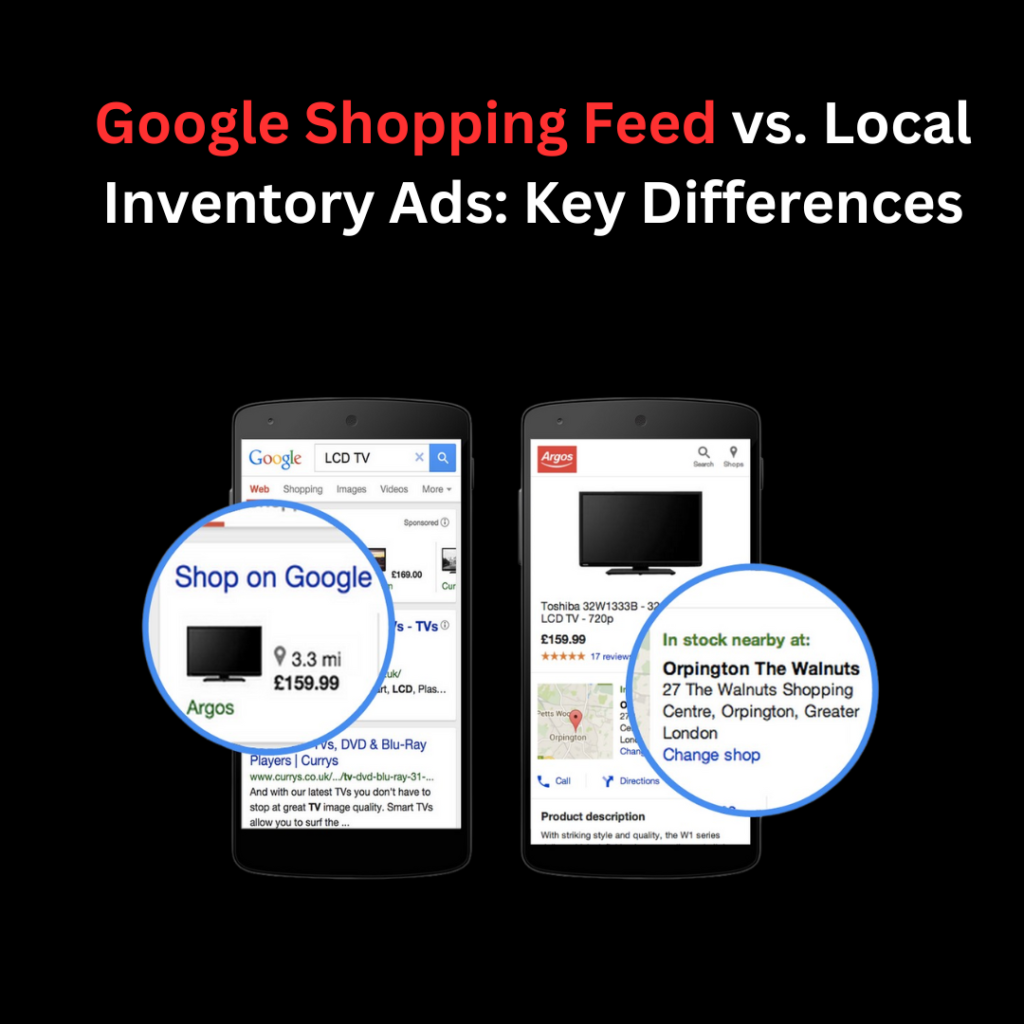Introduction
Google Shopping has transformed the way eCommerce businesses advertise their products. Two critical elements in this ecosystem are the Google Shopping Feed and Local Inventory Ads. While both serve distinct purposes, they play a vital role in maximizing product visibility and driving sales. Understanding the differences between these two options is essential for merchants aiming to optimize their digital marketing strategies.
What is Google Shopping Feed?
A Google Shopping Feed is a structured file containing essential product information such as titles, descriptions, prices, availability, and images. This data is submitted to Google Merchant Center, which helps generate Google Shopping Ads. These ads appear in Google Search results, the Shopping tab, and across Google’s network, offering potential customers a seamless browsing experience.
The effectiveness of a Google Product Feed depends on how well it is optimized. Accurate and high-quality product data ensures better ad placements, increasing the chances of conversions. Merchants must regularly update their feed to reflect current stock levels, pricing, and promotional offers to stay competitive.
Understanding Local Inventory Ads
Local Inventory Ads cater specifically to businesses with physical stores. These ads display real-time stock availability to nearby shoppers searching for specific products. When users click on a Local Inventory Ad, they are directed to a Google-hosted local storefront where they can view product details, check store locations, and even get directions.
To run Local Inventory Ads, businesses must submit a local product feed that includes details such as store locations, stock levels, and pricing. This feature enhances the shopping experience by bridging the gap between online search intent and in-store purchases, driving foot traffic to brick-and-mortar shops.
Key Differences Between Google Shopping Feed and Local Inventory Ads
While both Google Shopping Feeds and Local Inventory Ads facilitate product visibility, they cater to different business needs. Here are the primary differences:
1. Target Audience
- Google Shopping Feed primarily serves online retailers looking to sell products through digital platforms. These ads are ideal for businesses without a physical storefront.
- Local Inventory Ads target shoppers searching for nearby products available in physical stores, making them suitable for retailers with brick-and-mortar locations.
2. Data Requirements
- Google Shopping Feed requires structured product data such as titles, descriptions, images, and pricing. This information is necessary to list products in Google Shopping Center and run campaigns effectively.
- Local Inventory Ads need additional details, including store locations and real-time stock availability. These elements help ensure that customers receive accurate information about product availability at nearby stores.
3. Customer Experience
- Google Shopping Feed focuses on providing a seamless online shopping journey. Customers can browse, compare, and purchase products directly from Google Shopping Ads.
- Local Inventory Ads enhance the in-store shopping experience by allowing users to check stock availability before visiting a physical store. This convenience increases the likelihood of making a purchase.
4. Sales Channels
- Google Shopping Feed supports eCommerce stores looking to drive direct online sales through platforms like Shopify, WooCommerce, and Magento.
- Local Inventory Ads drive foot traffic to physical stores, helping local retailers convert nearby searchers into customers.
The Role of Google Merchant Center in Managing Feeds
Both Google Shopping Feed and Local Inventory Ads require proper feed management within Google Merchant Center. This platform acts as a hub where businesses submit and maintain product data, ensuring their listings meet Google’s advertising policies. Merchants should frequently update their feeds to maintain accuracy and prevent disapprovals.
Optimizing a Google Product Feed involves enhancing product titles, descriptions, and images while incorporating relevant keywords. For Local Inventory Ads, ensuring stock levels and store locations are accurate is crucial to delivering the best customer experience.
How Meta Local Inventory Ads Enhance Local Sales
Apart from Google, Meta Local Inventory Ads also contribute to local retail success. These ads function similarly to Google’s version but appear on platforms like Facebook and Instagram. With a well-structured product feed, businesses can showcase their in-store products to users scrolling through their social media feeds, increasing engagement and foot traffic.
Integrating both Google Shopping Feed and Meta Local Inventory Ads can provide retailers with a well-rounded digital marketing strategy. By leveraging multiple platforms, businesses maximize their reach and ensure that potential customers can find their products, whether online or in-store.
Feed Optimization Strategies for Better Results
To make the most out of Feed Google Shopping and Local Inventory Ads, businesses should implement the following strategies:
1. Regular Feed Updates
Maintaining an accurate Google Shopping Feed ensures that products appear correctly in search results. Frequent updates help avoid mismatches in pricing, availability, and promotional offers.
2. High-Quality Product Information
Well-crafted titles, compelling descriptions, and high-resolution images contribute to better ad performance. Using structured data that aligns with Google Shopping Center guidelines improves ranking and visibility.
3. Location-Based Targeting
For Local Inventory Ads, ensuring precise location data helps attract the right audience. Updating store information and stock levels within Google Merchant Center enhances ad performance.
4. Utilizing Smart Bidding Strategies
Automated bidding strategies optimize ad placements for better conversions. Google’s Smart Bidding tools analyze user behavior and adjust bids accordingly, increasing the chances of successful transactions.
Conclusion
Both Google Shopping Feed and Local Inventory Ads serve distinct purposes in the digital advertising landscape. While Google Shopping Feed benefits online retailers aiming to boost eCommerce sales, Local Inventory Ads help physical stores attract local shoppers. Understanding their differences and optimizing feeds accordingly can significantly enhance a retailer’s overall marketing strategy.
By leveraging Google Shopping Center, Google Product Feed, and even Meta Local Inventory Ads, businesses can expand their reach and improve their sales performance. A well-optimized Feed Google Shopping strategy ensures that products receive maximum exposure, ultimately leading to higher conversions and business growth. To achieve optimal results, merchants should consistently refine their feed data and advertising approach to stay ahead of the competition. For expert guidance on optimizing Google Shopping Feed and managing Local Inventory Ads, visit Wixpa.com.

